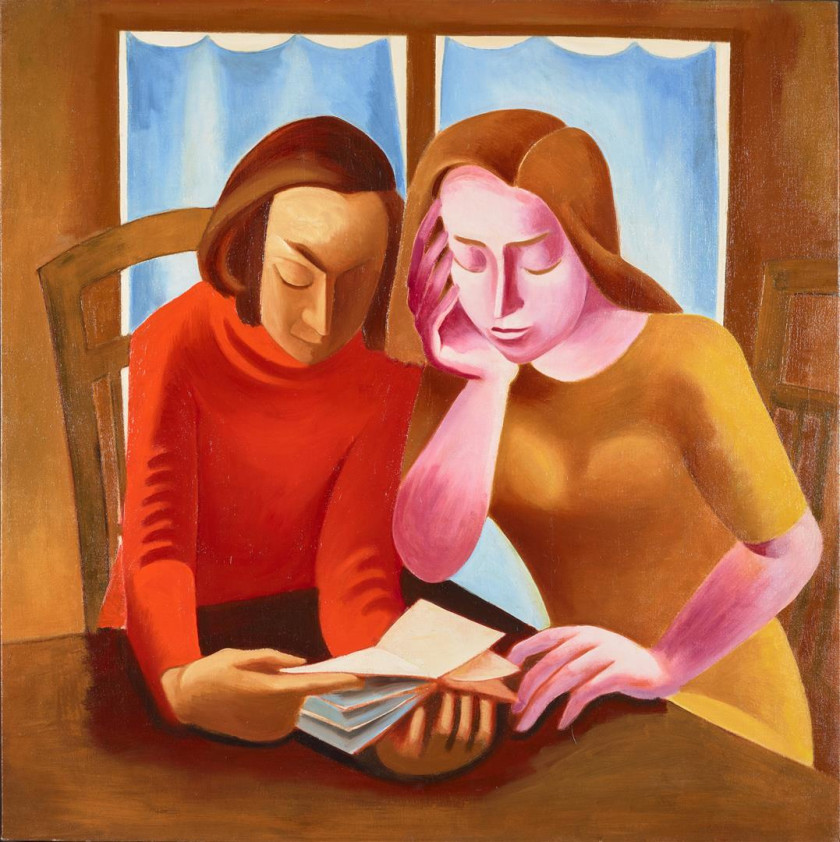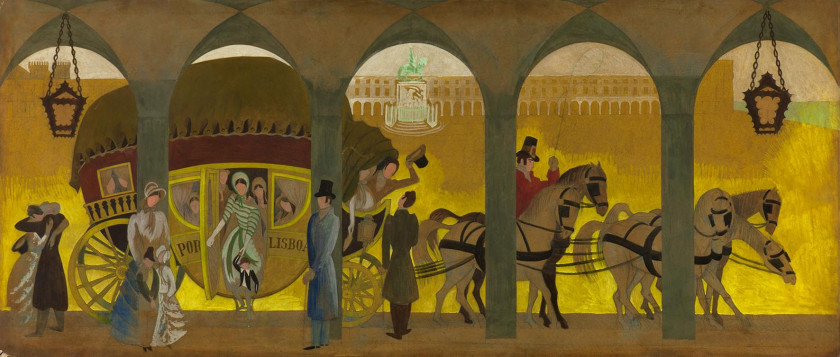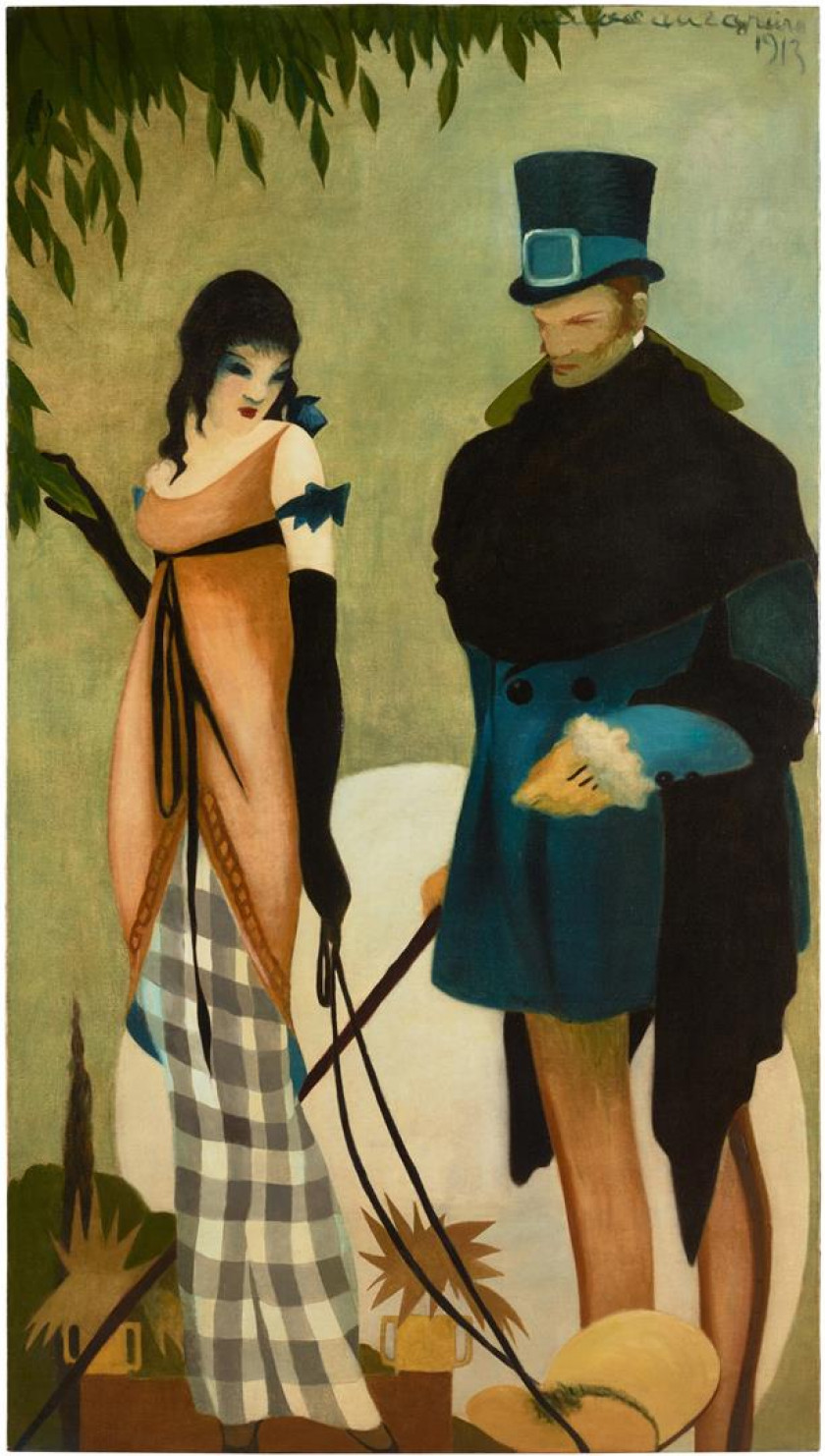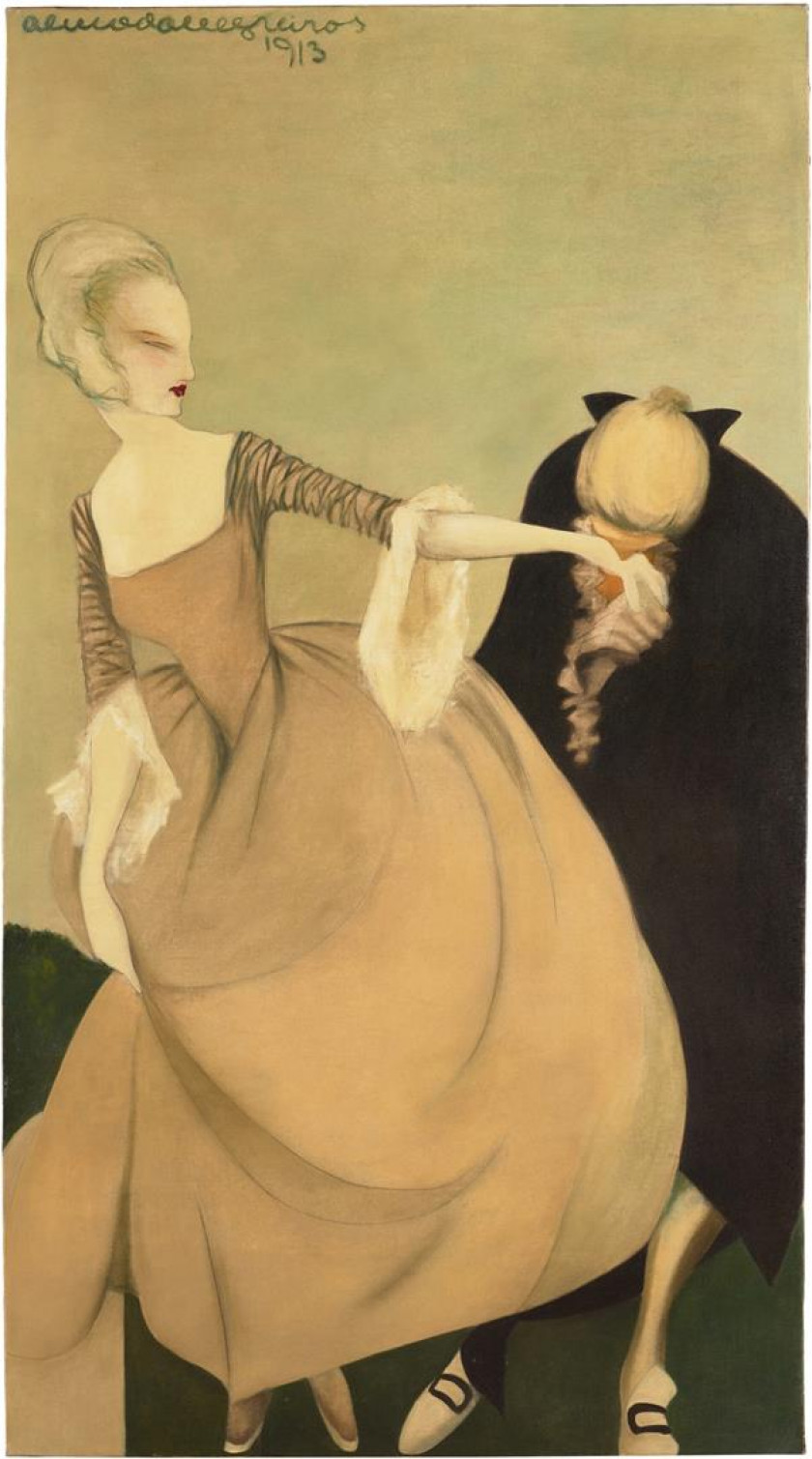Meninas a ler [Girls reading]
painting


s.d.
Oil on canvas
100 x 100 cm
In the field of plastic arts, the period between the wars was marked, on the one hand by the desire to innovate and present new aesthetic proposals, following the path of the previous vanguards; on the other hand, by the "return to order" that constituted a reaction to those same avant-garde experiences and their internationalising ideal. This modern rescue of models and languages inspired by classicism was marked by the taste for a new naturalism and the rehabilitation of tradition and "national" cultural values. During his stay in Paris in 1919-1920, and throughout the following decade, José de Almada Negreiros was confronted with this artistic "return to order", taking a particular interest in the neoclassicism explored in this period by Pablo Picasso.
In this painting, reminiscences of neoclassicism are perceptible in the massive volumetry of the figures, in their expressive chiaroscuro treatment, and integration of subtle anatomical deformations that cause distortions or elongations. The composition is defined by the triangular structure configured by the table and the positioning of the figures, which gives great stability to the whole. The palette, composed of browns, reds and warm yellows, is enlivened by the light stain defined by the book and the light opening in the centre; by the luminous pink of the face of the woman on the right; and by the radiant blue of the curtains framing the two characters.
The theme, a record of an everyday scene - two female characters absorbed in the act of reading, completely oblivious to the observer - is approached with a certain sensuality, conveyed by the tension between the passive, sombre figure on the left and the somewhat insinuating posture of the woman beside her, in a reclining position, and in whose voluptuous body the modelling of the breasts stands out.
Joana Baião


